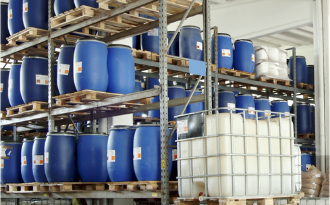Whether you are in manufacturing or distribution, the last year and a half must have been a bit of a nightmare, to put it mildly. First, September 2019 brought trade wars and tariffs. Who even remembers that now, feels like ages ago.
No one suspected that COVID was just around the corner. When it rains, it pours. Last year’s pandemic and unprecedented lockdowns dramatically affected and continue to disrupt manufacturing, distribution, logistics services, and other industries in the United States and all over the world. Procurement, forecasting, and supply chain management processes went out the window for many companies.
The hardest hit were the companies heavily dependent on imports and the ones with lean supply chains. Even big successful corporations struggled. In IKEA, for instance, a few months into the pandemic, people looking for bookshelves and new desks for their home office spaces (everybody had the same idea) were disappointed to learn that many showroom items were not available in any of the U.S. stores, and were also not expected to be replenished any time soon.
For years we have been taught to: control inventory, stay lean, consolidate suppliers, and control costs at all costs! So much for just-in-time inventory—it finally backfired.
However, one thing became clear. Companies that survived and even thrived were the ones who had a good handle on their entire business process—from suppliers, procurement, inventory management, to sales and marketing.
If there is one lesson we should all learn from this past year, it is that having full knowledge and control of your supply chain processes is even more important than ever. The pandemic will pass, but we will continue to live in a world where all industries and trade will remain global.
Companies that have a comprehensive Enterprise Resource Planning (“ERP”) system, which integrates accounting, warehouse and inventory management, procurement, sales order management, and other functions, by definition, will have a competitive advantage and an increased likelihood of surviving and thriving in current times.
Does your company have a comprehensive, well-integrated ERP, or do you have a dozen legacy systems that don’t communicate well? Do you need an audit of your existing software and guidance on how your IT systems can be integrated and enhanced?
2021 is going to be a year of significant changes for many companies. The world has changed, and it is time for your company to change as well. At Withum, we advise large and small companies in manufacturing, logistics, and distribution industries, helping clients transform their businesses.
Our team of talented experts at Withum can help your organization choose the right software and integrate it to streamline your business processes. Contact us to schedule a consultation.
Today’s Supply Chain Trends and Challenges on Youtube
An unfortunate supply chain challenge today is lack of global resilience and sustainability. As supply chain and operations are becoming more costly, supply chains are breaking down in the face of multi-country disruptions. Is digitization of supply chains the answer? In this episode, Walter Merkas and Kim Gordon discuss today’s supply chain trends and challenges and look into the potential causes and solutions to this disruption.
Today’s Supply Chain Trends and Challenges
In this episode, we will discuss today’s supply chain trends and challenges. Remember to Subscribe to receive an update when the latest episode releases.
Prefer to Listen? View Podcast Episodes


